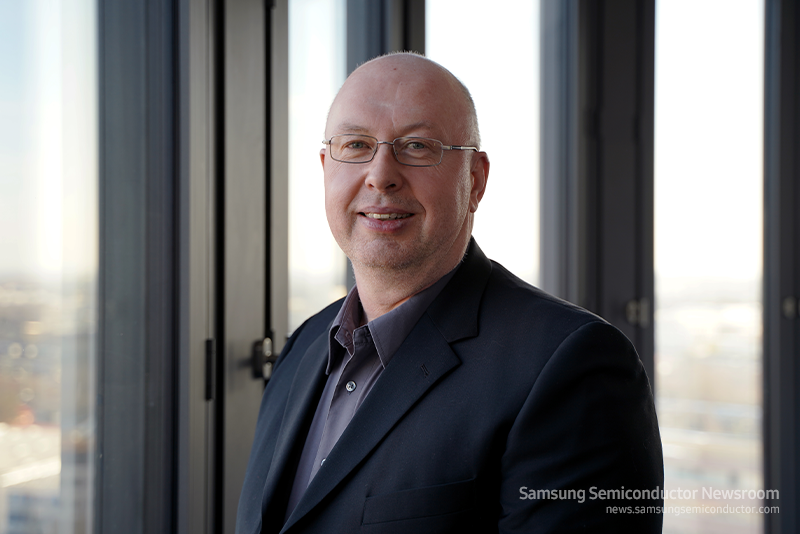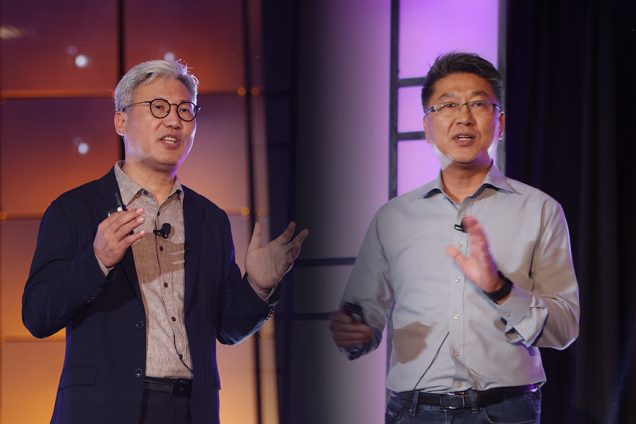[Editorial] Automotive memory tech — IAA MOBILITY 2023 and beyond

With September just around the corner, IAA MOBILITY 2023 is fast approaching. This renowned conference brings together automotive giants, suppliers, and technology brands from around the globe to unveil their latest breakthroughs and shape the future of the mobility landscape. It’s an exciting opportunity for industry leaders to showcase their innovations and set the course for the transformative journey ahead.
As we look forward to the show, I’d like to share some of the trends we’re seeing in automotive memory technology, and how they will shape the future of mobility in the years to come. The automotive industry (and the mobility sector more generally) is undergoing a period of significant and sustained change — Samsung memory technology will play a key role in this. So, here’s a sneak preview at some of the exciting topics I’ll be talking about in September.
.
1. Autonomous driving
The transition from advanced driver assistance systems (ADAS) to full autonomous driving has been a long time coming. After 10 years of excited discussion, we’re now beginning to see meaningful progress. In fact, in the next 5 – 10 years, with the current pace of ADAS and autonomous driving, I predict we’ll see at least 50% of cars capable of driving autonomously on motorways.
Just this year, Germany became the first country to recognise Level 3 automated driving from Mercedes, permitting drivers to take their hands off the wheel at speeds up to 60kmph in select models.
As this shift towards full autonomy gains momentum, the technology underpinning these systems generates increasing amounts of data. This requires ever greater processing power and larger, more capable, memory solutions.
For example, while infotainment features have long been a focus in car interiors, the evolution towards Level 3 autonomy opens up opportunities for genuine entertainment and communication experiences for both passengers and drivers. From movies and games to video conferencing, the car will become a true ‘server on wheels’, engaging occupants with a variety of applications we can’t yet imagine today.
.
2. Centralised computing
The modern car is already an incredibly sophisticated machine. As vehicle computing becomes more complex, we can expect to see manufacturers seeking to simplify and streamline systems wherever possible.
This means reducing the large number of individual control units in favour of more zonal control units, as well as centralising functionality of the CPU — larger amounts of memory consolidated in fewer units. This is where we’ll soon see more widespread adoption of memory devices such as SSDs in cars.
Previously, SSDs have been geared towards products like PCs, and servers. Until now, they haven’t really been used in the car, which hasn’t required the high performance an SSD provides. As we look to the next 4 – 6 years, with greater automotive technology capabilities, data processing and centralisation, we’ll see SSDs used more and more in the industry.
This introduction of SSDs will allow manufacturers to really step things up and begin to do things differently. As has always been the case: if we can provide the correct tools, creative people will build innovative solutions.
.
3. V2X (vehicle-to-everything) communication
Another exciting trend we see on the horizon is that of V2X communication. Many modern cars can already communicate with smart infrastructure — traffic lights initiating a red-light countdown clock in a driver dashboard, for example.
However, as more and more ADAS-enabled and autonomous cars arrive on the road, we’ll see much more car to car comms. For instance, when all cars in an area are driving autonomously, an interesting feature becomes possible. Cars will no longer need to “see” brake lights in front in order to know when to brake themselves — local communication among the cars will notify those behind to brake.
As vehicles become more connected to the outside world and each other, data connectivity assumes vital importance. This is where 5G technology will come into play, as the industry embraces the potential of V2X communication, facilitating safer and more efficient driving. Smarter motorways, pedestrian crossing warnings, and synchronised traffic lights are just a few examples of how connectivity will transform the driving experience.
For all the futuristic trends on display at this year’s IAA MOBILITY 2023, it’s important to remember that behind each of these innovations is an army of carefully crafted components. The invisible innovations taking place at the system level are what allow us to take major steps forward, from improving passenger safety to helping the planet.
.
To find out more about Samsung Semiconductor’s presence at IAA MOBILITY 2023, or to see our latest automotive innovations and applications visit https://semiconductor.samsung.com/emea/insights/application/automotive/

Related tag
Related Stories
-
 2023.08.09Samsung Announces Innovations to Enhance Memory Customer Experience in Data-Centric Era at FMS 2023
2023.08.09Samsung Announces Innovations to Enhance Memory Customer Experience in Data-Centric Era at FMS 2023 -
 2023.07.28[Editorial] Automotive electronics trends defining IAA MOBILITY 2023
2023.07.28[Editorial] Automotive electronics trends defining IAA MOBILITY 2023 -
 2023.07.12[Want a Byte? Ep.6] Tackling Nanoscaling in the Foundry Industry: How GAA and MBCFET™ Are Changing the Game
2023.07.12[Want a Byte? Ep.6] Tackling Nanoscaling in the Foundry Industry: How GAA and MBCFET™ Are Changing the Game